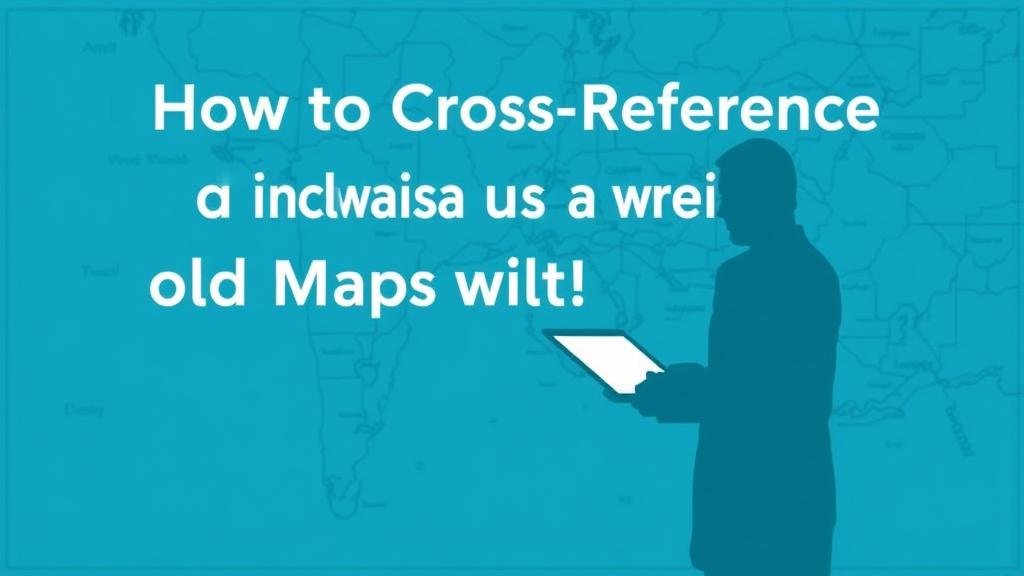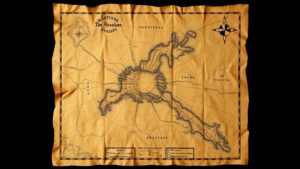How to Cross-Reference Old Maps with Modern GIS Tools for Discovery
How to Cross-Reference Old Maps with Modern GIS Tools for Discovery
In the field of historical geography, the integration of old maps with modern Geographic Information System (GIS) tools has opened new avenues for research and discovery. This process allows historians, cartographers, and geographers to understand historical landscapes and changes over time. This article explores methodologies for cross-referencing old maps with modern GIS technology, detailing steps, benefits, and challenges associated with the process.
The Significance of Old Maps
Old maps serve as invaluable artifacts that offer insights into historical cartography, cultural perceptions, and geographic features of a specific era. For example, a map of Rome from 1750 may reveal urban layouts, infrastructure, and land use that differ significantly from modern maps. The historical context surrounding maps such as the 1513 Piri Reis map of the Americas is also critical for understanding European exploration and the evolving view of the world.
Modern GIS Tools Overview
Geographic Information Systems are sophisticated tools that allow for the analysis and visualization of spatial data. These systems enable users to layer information, conduct spatial analysis, and create detailed maps. Common GIS software includes ArcGIS, QGIS, and Google Earth. These platforms can handle various data formats, which makes them suitable for processing historical maps.
Methodology for Cross-Referencing Old Maps with GIS Tools
Step 1: Gathering Historical Maps
The first step involves sourcing digital or scanned versions of historical maps. Institutions such as the Library of Congress, British Library, and various national archives contain extensive collections of digitized maps. For example, the USGS Historical Topographic Map Collection provides access to topographic maps dating back to the late 19th century.
Step 2: Digitization and Georeferencing
Once historical maps are obtained, the next step is to digitize them if they are not available in electronic format. This process involves scanning and converting the maps into raster images. Then, georeferencing is required–aligning the historical map to a coordinate system that corresponds to modern geographic data. Tools like QGIS provide functionalities to georeference images by identifying known control points that match both the old map and current maps.
Step 3: Data Layer Integration
After georeferencing, the historical map can be overlaid with contemporary data layers using GIS software. For example, a 19th-century map of New York City can be analyzed alongside modern zoning maps, population data, or historical land use datasets. This leads to the discovery of changes in land use, population density, and urban expansion. In 2017, researchers used QGIS to overlay historical land use maps of Chicago to analyze patterns of urban development over a century.
Step 4: Spatial Analysis
GIS tools allow researchers to conduct various spatial analyses, such as proximity analysis, overlay analysis, and buffer zones. Such analyses can reveal historic trends, such as the expansion of urban areas or changes in natural landscapes. For example, applying buffer analysis around rivers on old maps can help study historical flooding patterns and their effects on settlement locations.
Step 5: Interpretation and Presentation
Upon completing the analyses, researchers must interpret the results. This will often involve crafting narratives that link historical data with contemporary findings. GIS platforms enable users to create compelling visualizations that can be critical for presentations, publications, or public engagement. For example, the interactive map tool created by Stanford University presents the evolution of Berlin using old and new map comparisons, vividly showcasing the city’s transformation over time.
Challenges and Considerations
Data Quality and Accuracy
One of the primary challenges in cross-referencing old maps with GIS tools lies in the quality and accuracy of the historical maps. Often, old maps contain inaccuracies, as they were created with different surveying techniques and data availability. This necessitates a careful evaluation of accuracy when overlaying with modern data.
Technological Limitations
Also, varying technologies and methodologies over time mean that some historical maps may be scanned or digitized in suboptimal resolutions, affecting the georeferencing process. For example, a low-resolution historical map may not provide sufficient detail to accurately align with high-resolution contemporary satellite imagery.
Interdisciplinary Collaboration
The successful fusion of old and new requires collaboration among historians, cartographers, and GIS specialists. This discipline merging encourages richer insights and fosters a holistic understanding of historical contexts. Engaging with local historians can also provide valuable interpretative perspectives that enhance research outcomes.
Conclusion and Actionable Takeaways
The cross-referencing of old maps with modern GIS tools is a powerful approach for uncovering historical narratives and phenomena. By following a systematic methodology–ranging from the gathering of maps to spatial analysis–researchers can gain valuable insights into historical geography. As technology evolves, the potential for discovery increases, highlighting the importance of both historical maps and modern GIS capabilities.
To effectively utilize these tools, researchers are encouraged to:
- Access databases and institutions that offer digital maps for research.
- Become proficient in GIS software like QGIS or ArcGIS to maximize analyses.
- Engage with interdisciplinary teams to enhance the depth and credibility of their investigations.
Ultimately, the integration of old and new not only enriches academic research but also enhances our understanding of geographical transformation over time.

